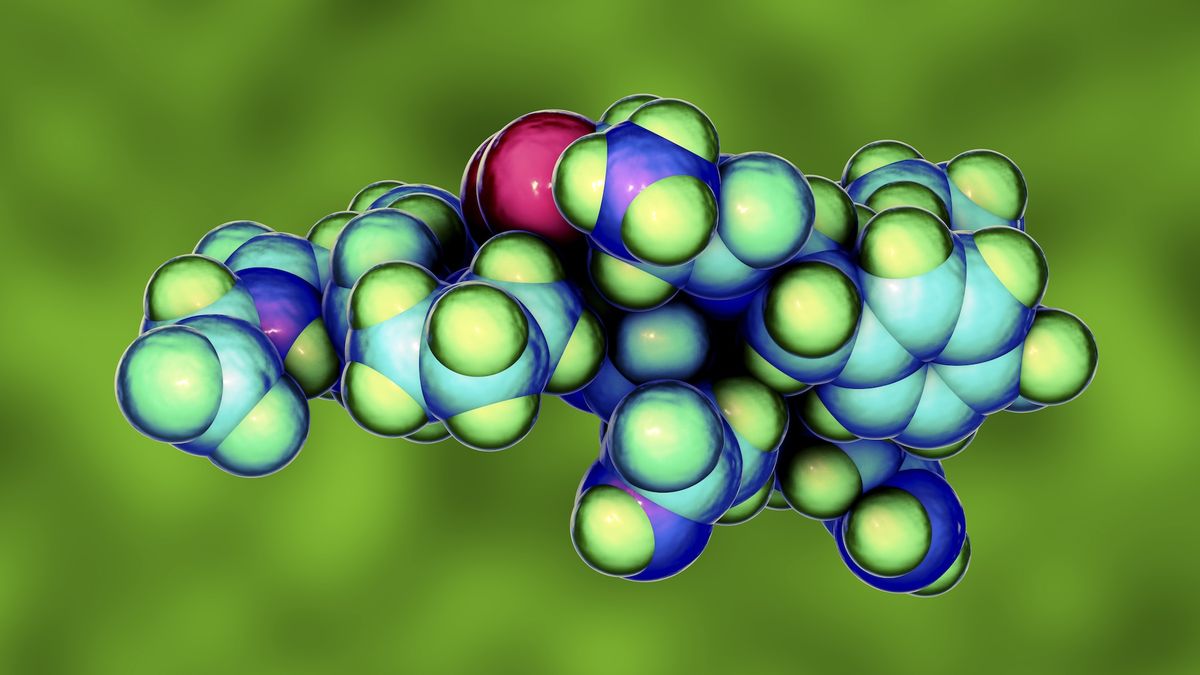Sleep apnea often comes with high blood pressure, which, in turn, contributes to the heart-health risks tied to both conditions. Now, scientists have pinpointed two brain chemicals that play a role in this chain reaction and could pave the way for new therapies.
In a study of lab rats published in May in The Journal of Physiology, the scientists zeroed in on two brain-made chemicals known to affect blood pressure: oxytocin, also famous for its roles in attachment and social bonding, and corticotropin-releasing hormone (CRH). They wanted to see how these two “neurohormones” influence the brainstem, a structure at the bottom of the brain tasked with controlling many involuntary functions, including blood pressure.
People with sleep apnea temporarily stop breathing while they are sleeping, briefly depriving the body of oxygen. This puts it in a hypoxic, or low-oxygen, state.
“When the body becomes low in oxygen, a state called hypoxia, this causes a reflex for us to want to increase our breathing that’s going to bring our oxygen level back,” said Dr. David Kline, a University of Missouri College of Veterinary Medicine professor who oversaw the study. “It also causes a reflex for our blood pressure to go up to get that oxygenated blood to go where it needs to go,” Kline told Live Science.
Related: ‘Love hormone’ oxytocin may help mend broken hearts (literally), lab study suggests
However, while it’s known that both oxytocin and CRH can alter blood pressure, their effects after these brief, repetitive bursts of hypoxia were not fully understood.
The researchers ran their experiment with lab rats that were split into two groups: One group was kept in normal oxygen levels, while the second group was intermittently placed under low-oxygen conditions to mimic aspects of sleep apnea episodes.
The experiment ran for 10 days, after which the scientists collected samples of the rats’ brainstems to analyze their neuron activity using various techniques. Additional samples of brain tissue were taken to examine the activity of oxytocin and CRH using a microscope, and a count of specific brain cells that respond to the two chemicals was done manually.
Both oxytocin and CRH are made by cells in a structure called the paraventricular nucleus (PVN). These PVN cells plug into a major sensory center in the brainstem that receives signals from the body that instruct it on how to regulate the cardiovascular system, including blood pressure. Oxytocin and CRH have a hand in sending such signals — but the experiment showed that hypoxia enhances their influence.
The two chemicals had a greater effect on the brainstem activity of the hypoxic rats than it did on the rats kept at normal oxygen levels. After bouts of low oxygen, there was an increase in the release of the chemicals from the PVN, as well as an increase in the number of receptors they plug into in the brainstem. In turn, there was an uptick in the number of signals fired off by the brainstem’s sensory center.
Based on these findings, Kline said sleep apnea may be exaggerating the effects of oxytocin and CRH on the brainstem, which may then result in increased blood pressure.
In other words, the release of the chemicals after hypoxic episodes causes blood pressure to become higher and higher each time, Kline said. Over the course of weeks, if this occurs too often, blood pressure then remains high because the brain regions responsible for controlling blood pressure have been altered, he hypothesized.
However, this study did not explicitly look into the mechanisms behind this; the group is now working on studies that could shed light on these unknowns.
After more chemicals involved in the mechanism are identified, specific drugs can be developed to target them and lower blood pressure in sleep apnea patients, Kline said.
Blanket drugs that affect the whole brain may not be the best option, he noted, because the effects of oxytocin and CRH depend on which brain regions they’re interacting with. Both chemicals can actually decrease blood pressure if they target different parts of the brainstem than the team studied, for example.
However, in the zone the researchers focused on, both chemicals instead had an elevating effect, Procopio Gama de Barcellos Filho, a postdoctoral researcher in Kline’s lab who led the study, told Live Science.
“I think all this basic research is really going to take us to new avenues that can be picked up by the clinicians and the drug companies,” Kline said. However, he cautioned that there’s still a long way to go to combine their findings into a therapeutic approach for human patients.
Ever wonder why some people build muscle more easily than others or why freckles come out in the sun? Send us your questions about how the human body works to community@livescience.com with the subject line “Health Desk Q,” and you may see your question answered on the website!
















%20(2)%20(1).jpg)


Discussion about this post